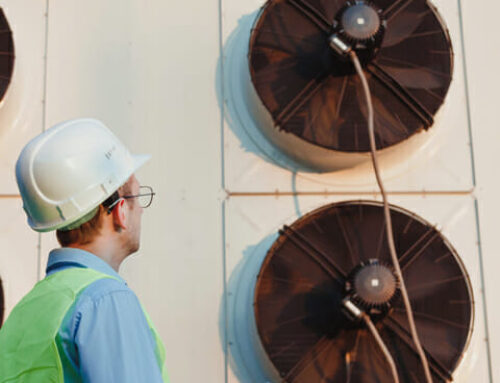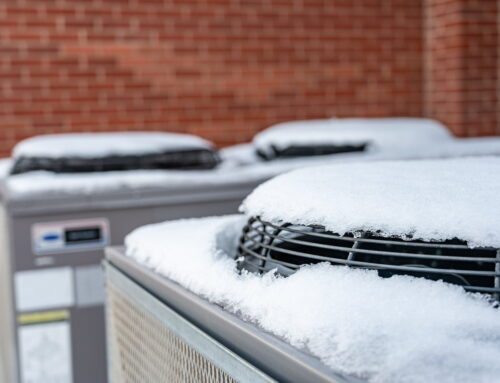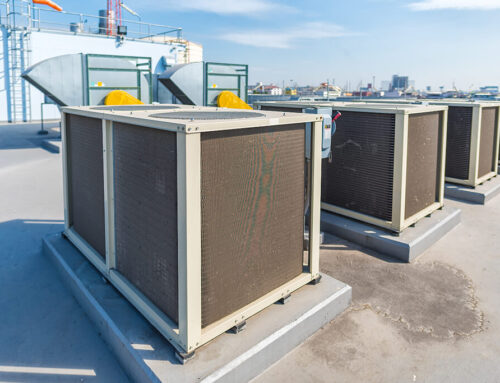Did you know that a significant number of commercial HVAC inefficiencies are due to simple issues with equipment that can be quickly resolved with proper guidance and preventative maintenance tips? Navigating the maze of commercial HVAC troubleshooting with the right tools doesn’t have to feel like decoding an enigma for a skilled technician, especially with regular preventative maintenance on the equipment. This HVAC troubleshooting guide is your trusty sidekick, offering clear steps and pro tips to pinpoint and tackle common snags in your system, with tools even a technician would use. Whether you’re facing erratic temperatures or mysterious noises, our HVAC troubleshooting guide and straightforward advice on tools and preventative maintenance will help keep your workspace comfortable and your energy bills in check.
Understanding the Basics of Commercial HVAC Systems
System Types
Commercial HVAC systems come in various setups. Single-split systems are common and affordable equipment for small spaces, often used as an example in HVAC troubleshooting guides for repairs. Each unit connects to one indoor unit, providing individual control for the customer to check the equipment. Multi-split systems link multiple indoor units to one outdoor unit, saving on exterior space but requiring more piping. For larger commercial buildings, VRF/VRV systems offer efficiency by varying refrigerant flow based on need.
Each system type suits different building sizes and needs. Single-splits work well for small shops or cafes while multi-splits suit medium-sized businesses with multiple rooms needing independent climate control.
Key Components
Understanding key components is crucial in troubleshooting commercial HVAC issues.
-
The compressor, often measured by compressor amp draw and a pro tip to check, pressurizes refrigerant to heat or cool air.
-
Heat exchangers transfer heat effectively, impacting ambient temperature regulation.
-
Lastly, the air handlers distribute conditioned air throughout the building.
These components ensure a comfortable environment within commercial spaces and require regular checks for efficient operation.
Control Systems
The brain of an HVAC system lies in its thermostats and control systems. They regulate temperatures according to set preferences ensuring optimal comfort levels are maintained without manual intervention.
Control systems also provide valuable information about system performance which can be used to check during troubleshooting processes such as identifying irregularities in primary power usage or unexpected shifts in ambient temperature readings within a space.
Importance of Regular Maintenance for System Longevity
Filter Changes
Routine filter changes are essential. They keep the air flowing smoothly. Dirty filters cause blockages. This strains the HVAC system.
Filters should be replaced regularly. How often depends on the system and use. For example, a busy office might need more frequent changes than a rarely used conference room; pro tip: always check to ensure optimal maintenance.
Coil Cleaning
Coil cleaning boosts efficiency. Pro tip: check for dirt and debris as they make it harder for coils to transfer heat. Clean coils mean better performance.
Cleaning schedules vary by system demands and environment exposure. Coils in dusty areas may need more attention.
Seasonal Inspections
Seasonal inspections prevent unexpected failures. Technicians can spot issues before they worsen during these check-ups.
Pro tip: A spring inspection prepares your system for summer heat, while fall checks ready it for winter colds.
Regular maintenance is not just about preventing breakdowns; it’s also about preserving your investment in infrastructure and ensuring that power is used effectively to control climate within your commercial space over time.
Step-by-Step Guide to Essential Commercial HVAC Troubleshooting
Check Thermostat
Regular maintenance can help extend the life of your HVAC system. But when issues arise, begin with the thermostat. Ensure it’s on and set correctly. Sometimes, a simple adjustment is all that’s needed.
Check for dead batteries or incorrect settings. For example, if your office feels warm but the thermostat is set to cool, someone may have accidentally adjusted it.
Inspect Power
Next, examine power sources and electrical connections. A tripped breaker or blown fuse could cut power to your unit. Reset breakers and replace fuses as needed.
Ensure all switches connected to the HVAC are in the ‘on’ position. Loose wires can also cause problems; however, contact a professional for these repairs.
Airflow Assessment
Finally, assess airflow and temperature discrepancies across different zones in your building.
Create a checklist:
-
Are all vents open?
-
Is anything blocking return air grilles?
-
Do filters need replacing?
These factors can affect temperature consistency and overall performance.
Addressing Common Rooftop Package Unit Problems
Fan Motor Issues
When a rooftop package unit’s fan motor fails, the system struggles. Listen for unusual noises or check if air isn’t moving properly. These are signs of dysfunction. A non-responsive fan might mean electrical troubles or a burnt-out motor.
Maintenance is key to prevent these issues. Regular cleaning and inspections can spot problems early on. If you hear rattling or see the fan not spinning, it’s time to investigate further.
Drainage Systems
Water pooling around your HVAC unit signals drainage problems. Blocked drain lines cause this common issue, leading to water damage and mold growth inside the building.
To fix this, ensure that pipes are clear of debris and algae buildup which often clog drains. Sometimes, adjusting the slope of drainage pans helps water flow better.
Ductwork Leaks
Leaky ducts waste energy and reduce system efficiency drastically. Inspecting connections for gaps or tears is vital in troubleshooting commercial HVAC systems.
Sealing leaks with mastic tape or sealant keeps conditioned air from escaping into unconditioned spaces like attics or crawlspaces—saving money on energy bills in the long run.
Proper maintenance involves checking these areas regularly:
-
Fan motors for signs of wear
-
Drainage systems for blockages
-
Ductwork connections for any leaks
Identifying and Fixing HVAC Leaks and Inefficiencies
Leak Detection
Detecting refrigerant leaks is crucial for maintaining an HVAC system. Use a leak detector to find where the gas escapes. You might also notice ice on coils or hear hissing sounds.
Technicians often use soapy water to spot leaks. Bubbles form at leak points when applied. This method is simple but effective.
Insulation Impact
Poor insulation can lead to energy loss. Check if the system’s insulation is intact. Look for areas where cold air meets warm, possibly creating condensation.
Insulation should be fixed promptly to prevent efficiency drops. Properly insulated systems keep temperatures stable and reduce energy bills.
Duct Sealing
Gaps in ductwork are common issues that affect performance. Seal these gaps with mastic or metal-backed tape.
Regular maintenance helps identify such gaps early on. Sealing them ensures better airflow and temperature control throughout buildings.
Resolving Unusual Noises and Ignition Issues in HVAC Systems
Noise Diagnosis
HVAC systems are complex, and unusual noises can signal different issues. Rattling may indicate loose panels or screws that require tightening. Hissing sounds often point to a refrigerant leak or compromised ductwork. Banging could be caused by a problem with the blower assembly or motor mounts.
To address these problems:
-
Inspect all accessible components for looseness.
-
Check for signs of leaks along the ducts.
-
Listen carefully to locate the exact source of noise.
Ignition Troubleshooting
Problems with ignition can leave you in the cold. For pilot lights, ensure there’s no debris blocking the gas flow and that it’s lit properly. With electronic ignitions, issues might include faulty electrical connections or sensors.
Here’s what you should do:
-
Clean any dirt around the pilot light area.
-
Examine wiring on electronic ignitions for damage.
Remember: Always turn off power before inspecting electrical parts.
Preventive Lubrication
Squealing or grinding sounds can be symptoms of friction among moving parts needing lubrication. Regular maintenance is vital here; it prevents wear-and-tear on belts and bearings which keeps your system running smoothly.
To keep things quiet:
-
Use manufacturer-recommended oils only.
-
Apply lubricant sparingly to avoid attracting dirt.
Preventative Strategies to Minimize Commercial HVAC Downtime
Maintenance Schedule
Regular upkeep is key. Set a routine maintenance schedule for your commercial HVAC system. This keeps it running smoothly and prevents surprises. Technicians can spot issues early, saving time and money.
Consider these steps:
-
Monthly filter checks
-
Seasonal inspections
-
Annual professional evaluations
A well-maintained system dodges major breakdowns.
Smart Controls
Upgrade to smart technology. Smart controls offer real-time monitoring of your HVAC system’s performance. They send alerts when something’s off.
This tech helps in many ways:
-
Detects problems fast.
-
Allows remote troubleshooting.
-
Saves energy by optimizing usage.
Smart systems keep you informed and ahead of the game.
Sensor Calibration
Calibrate sensors and controls yearly with expert help. Proper calibration ensures accurate readings and optimal function.
Here’s why it matters:
-
It maintains efficiency.
-
It extends equipment life span.
-
It guarantees comfort for building occupants.
Professional calibration makes sure everything works as intended.
Preparing to Engage Professional HVAC Troubleshooting Services
Technician Checklist
Before calling in the professionals, gather critical information about your HVAC system. This includes the system type, its model, how old it is, and any history of issues or repairs.
Make a list that details:
-
The make and model of the equipment.
-
The age of the system.
-
A record of all maintenance work done previously.
Having this data on hand will help technicians quickly understand your setup. It speeds up their ability to diagnose problems accurately.
Certification Verification
Ensure that you verify a technician’s qualifications before they inspect your commercial HVAC unit. Look for certifications that prove they can handle complex commercial systems.
Ask for proof like:
-
Certificates from recognized institutions.
-
References from other businesses.
A certified professional will have the right tools and know-how to troubleshoot effectively without causing further issues.
Diagnostic Prep
Create a log detailing when issues occur and what you observe during these times. Note if there are strange noises, temperature inconsistencies, or if certain parts don’t seem to run correctly.
Include in your log:
-
Times and dates when problems happen.
-
Specific symptoms or errors shown by the system.
This record will give technicians insight into patterns that could indicate underlying causes. It also helps them check against common failure points such as circuit breakers or amp draw readings with more precision.
Final Remarks
Navigating the complexities of commercial HVAC systems can be a breeze with the right know-how. We’ve covered the gamut—from the basics to troubleshooting common snags. Regular maintenance is your best bet to keep those systems humming smoothly, and knowing how to tackle issues head-on saves time and cash. Whether it’s a rogue noise or an ignition hiccup, you’ve got this.
Now, don’t just stand there—roll up your sleeves and put this guide to work. And if things get hairy, no shame in calling in the pros. They’re just a phone call away. Ready for a comfy, efficient space? Let’s make it happen!






